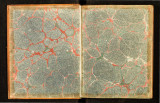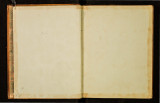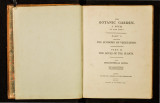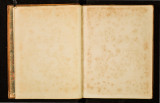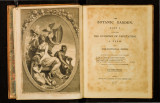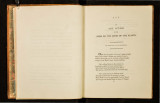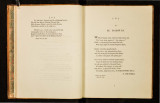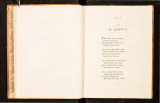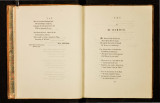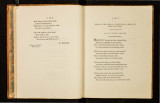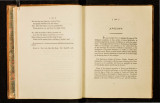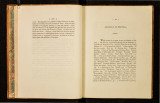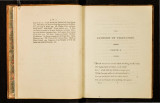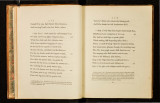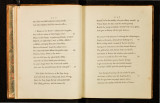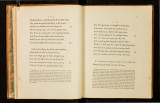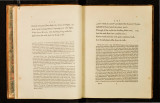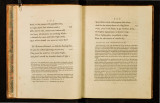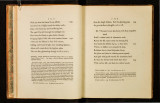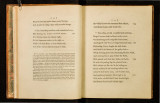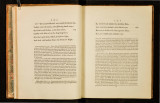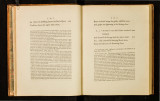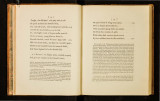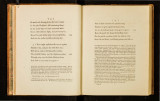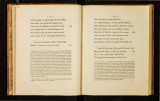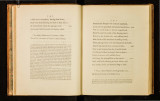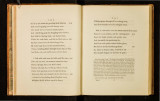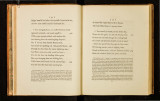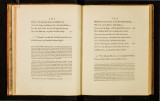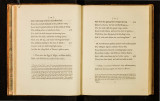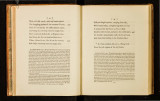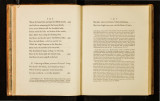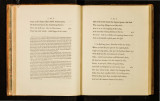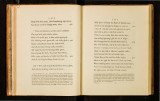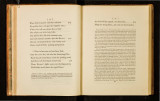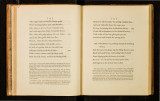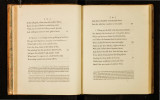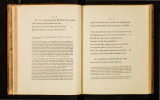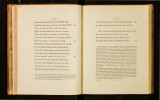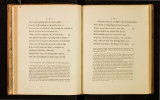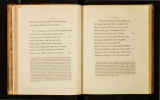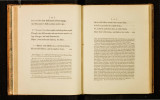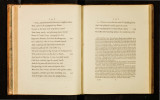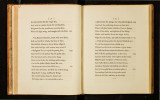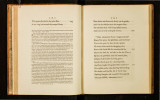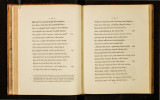| OCR Text |
Show I roB VEGETABLE GLANDULATION. NoTE XXXIX. confifl:ing of petals inft.ead of wings, calyxes infiead _of "':ing-fueaths: with the organs of reproduction, and having fuewn the ufe of the fanna m fecundatmg the egg or fee~, he proceeds to explain the production of the bucl. The calyx of a flower, he fays, IS an expanfion of the outer bark, the petals proceed from the inner b~rk or rind, the fiamens from the alburnum or woody circle, and the fiyle from the ptth. In the production and impregnation of the feed a commixture of the fecretions of the fl:amens and fl:yle are neceffary; and for the produCl.ion of a bud he thinks the medulla or ~ith burfls its integuments and mixes with the woody part or alburnum, and thefe forc1ng their pa!fage through the rind and bark contlitute the bud or viviparous progeny of the vegetable. Syfiem of Vegetables tranflated from Linneus, p. 8. It has been fuppofed that the embryon vegetable after fecundation, by its living activity or flimulus exerted on the veffels of the parent plant, may produce the fruit or feed-lobes, as the animal fetus produces its placenta, and as vegetable buds may be fuppofed to produce their umbilic:ll veffels or roots down the bark of the tree. This in refpeCl: to the production of the fruit furrounding the feeds of trees has been affimilated to the gall-nuts on oak-leaves, and to the bedeguar on briars, but there is a powerful objection to this dochine, viz. that the fmit of figs, all which are female in this country, grow nearly as large without fecundation, and therefore the embryon has in them no felf-living principle. NOTE XXXIX.--VEGETABLE GLANDULATION. Seeks, where fine pores their dulcet balm dijlil. CANTO IV. I. 52I. THE glands of vegetables which feparate from their blood the mucilage, fiarch, or fugar for the placentation or fupport of their feeds, bulbs, and buds ; or thofe which depofit their bitter, acrid, or narcotic juices for their defence from depredations of infects or larger animals; or thofe which fecrete refins or wax for their protection from moifture or frofl:s, confift of ve!fels too fine for the injection or abforption of coloured fluids, and have not therefore yet been exhibited to the infpetl'ion even of our gla!fes, and can therefore only be known by their effects, but one of the mofl: curious and important of all vegetable fecretions, that of honey, is apparent to our naked eyes, though before the difcoveries of Linneus the nectary or honey-gland had not even acquired a name. The odoriferous e!fential oils of feveral flowers feem to have been defigned for their defence againfl: the depredations of infects, while their beautiful colours were a nece!fary confequence of the fi:z.e of the particles of their blood, or of the tenuity of the exterior NoTE XXXIX. VEGETABLE GLANDULATION. 109 mem. brane of the petal. The ulie o f t h e pro l'1f i c dU 1l1l •I S now well afcertained, the wax. ~vhich covers the anthers prevents this dufl: from receiving moitlure, which would make 11 bnrfl: ~rem~turely and th~nce prevent its application to the fiigma, as fometimes happens m motfl: years and IS the caufe of deficient fecundation both of our fields and orchards. Th~ univerfality of the. production of honey in the vegetable world, and the very C0~1pltcated a~para~u~ whtch nature has confhucted in many flowers, as well as the acnd or d~letenous JUICes ilic has furnifhed thofe flowers with (as in the Aconite) to pr?teCl: ~~ll~ honey from rain and from the depredations of infects, fcem to imply that th1s flutd IS of very great importance in the ,·egetablc economy ; and alfo that it was neceffary to expofe it to the open air previous to its reabforption into the vegetable velle!s. In the animal fyfl:em the lachrymal gland feparates its fluid into the open air for the purpofe of moifl:ening the eye, of this tluid the part which does not exhale is abforbed bv the puncta lachrymalia and carried into the nofhils; but as this is not a nutritive fluid the analogy goes no further than its fecretion into the open'air and its reabforption into the fyft.em ; every other fccrctcd fluid in the animal body is in part abforbed again into the fyfl:em, even- thofe which arc efl:eemed excrementitious, as the urine and pe1 fpirable matter, of which the latter is fecretcd, like the honey, into the external air. That the honey is a nu\1 itious fluid, perhaps the moll fo of any vegetable production, appears from its great fimilarity to fu gar, and from its affording fufl:enance to fuch numbers of infects, which live upon it folely during fummer, and lay it up for their winter provifion. Thefe proofs of its nutritive nature evince the neceffity of it1> reabforption into the vegetable fyfiem for fomc ufeful purpofe. This purpofe however has as yet efc<1 ped the refearches of philofophical botanifis. M. Pontedera believes it deligned 'to lub icate the vegetable uterus, and compares the horn-like neCl:aries of fomc flowers to the appendicle of the c<ecum intefiinum of animals. (Antholog. p. 49.) Others have fuppcJfd that the honey, when reabforbed, might ferve the purpofe of the liquor amnii, or white of the egg, as a nutriment for the young embryon or fecundated feed in Jts early fiate of cxificnce. But as the nectary is found equally general in male flowers as in female ones ; and as the young embryon or feed grows before the p.etals and neCtary arc expanded, and after they fall off; and, thirdly, as the netlary fo foon falls off after the fecundation of the pifiillum ; thefe feem to be infurmountable objections to both the above mention{'d opinions. In this fiate of uncertainty conjetlures may be of ufe fo far as they lead to further experiment and invefligation. In many tribes of in feels, as the filk-worm, and perhaps in all the moths and butterflies, the malr ~ Dr fcm::de parents die as foon as the eggs are impregnated and excluded; the eggs remaining to be pufecred ond hotchcd at fome future time. The fame thing happc::ns in regard to the wale and female parts of flo,\·ers; the anthers and f.laments, which conflitute the male parts of the flower, and the fiigma and fiyle, which coufl:itute the female p:ut of the flower, fall off and die as foon as th~ feeds are impregnated, and along with thcfe the petals and nectary. Now the moths |



